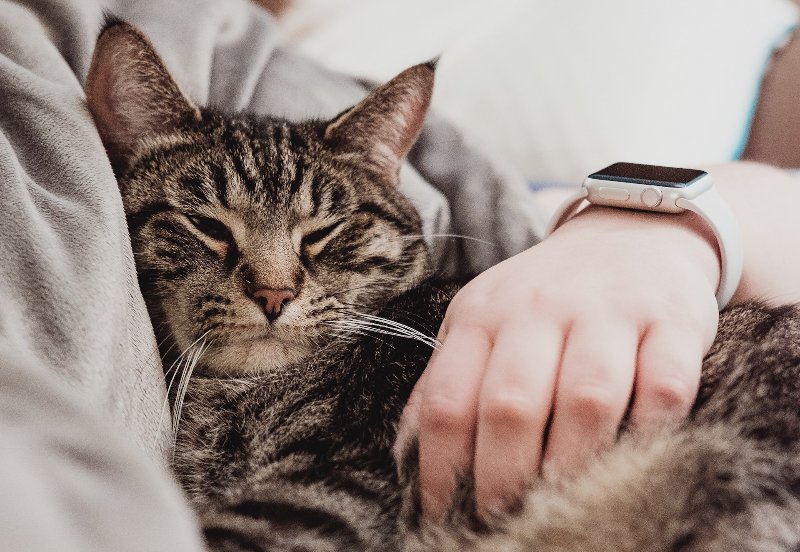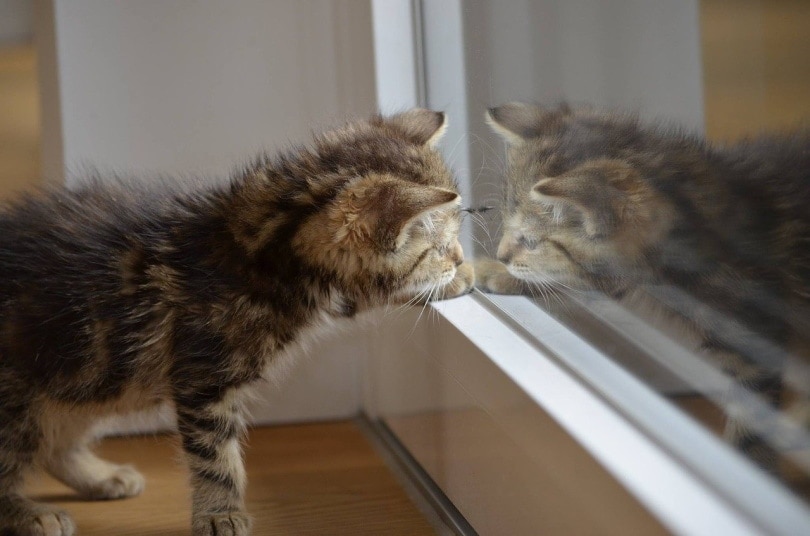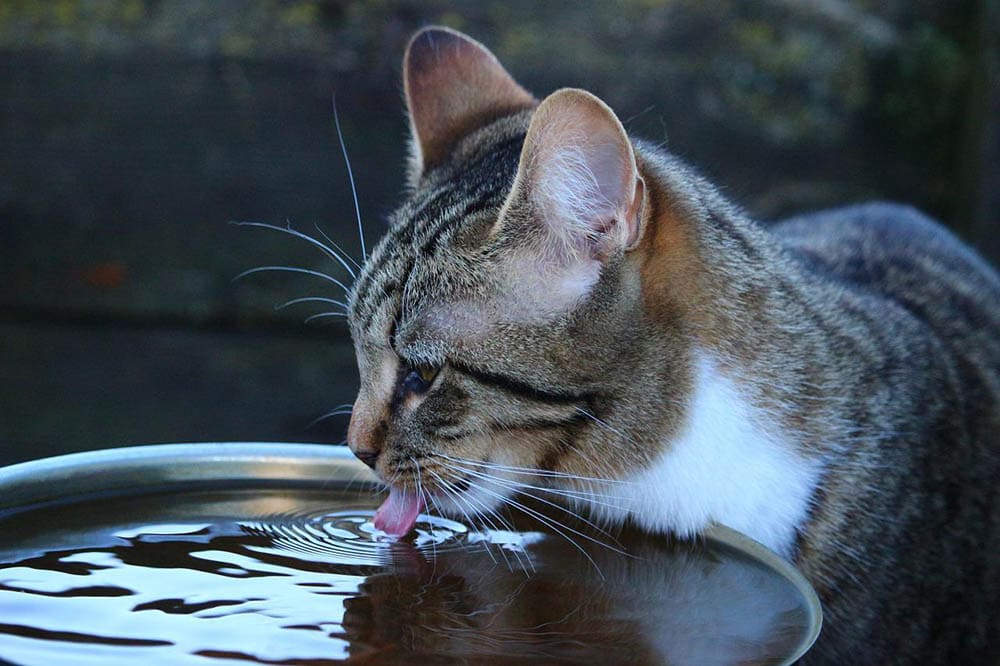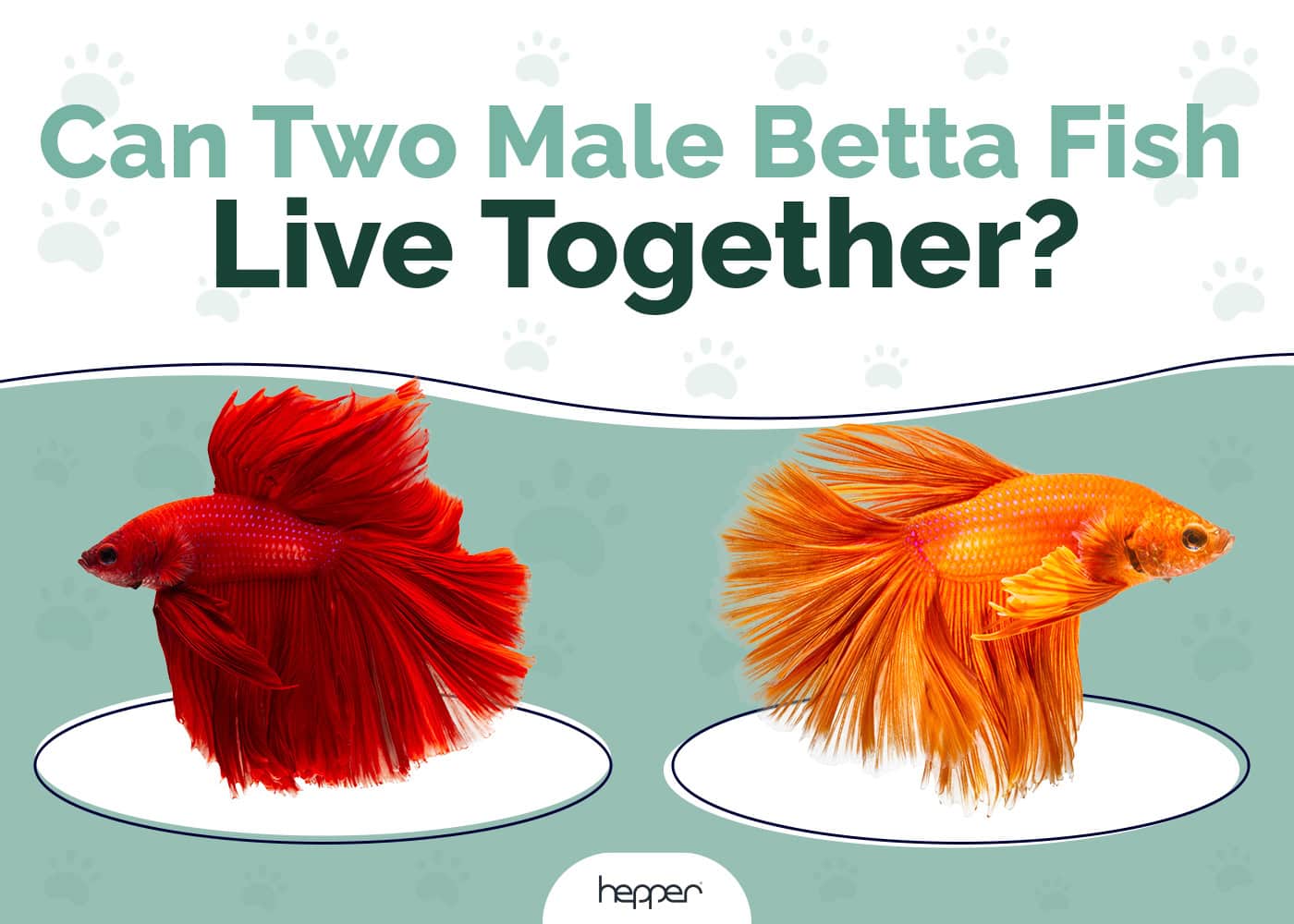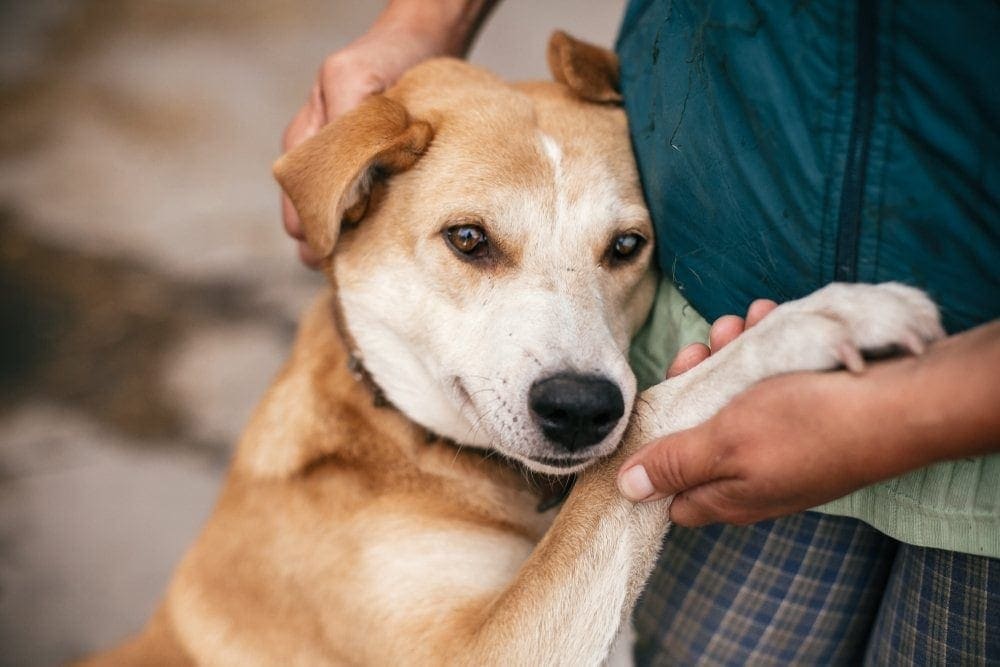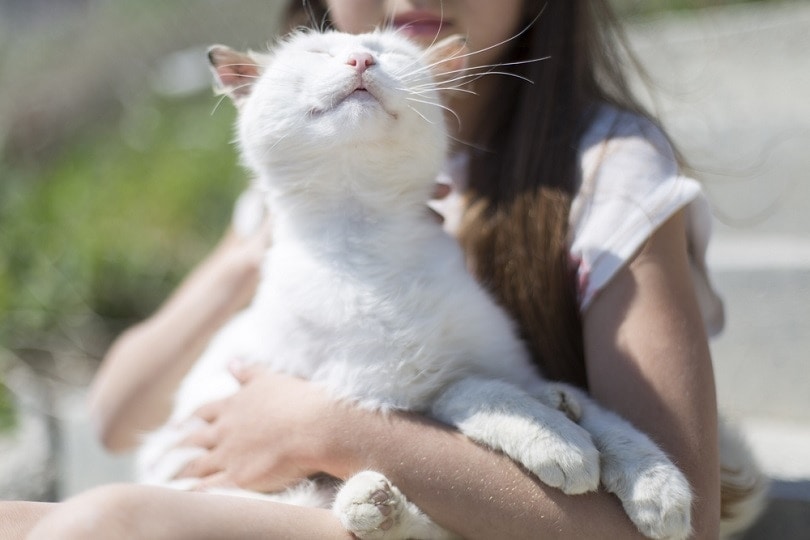Why Do Cats Pull & Chew Their Nails? Feline Behavior Explained

Updated on
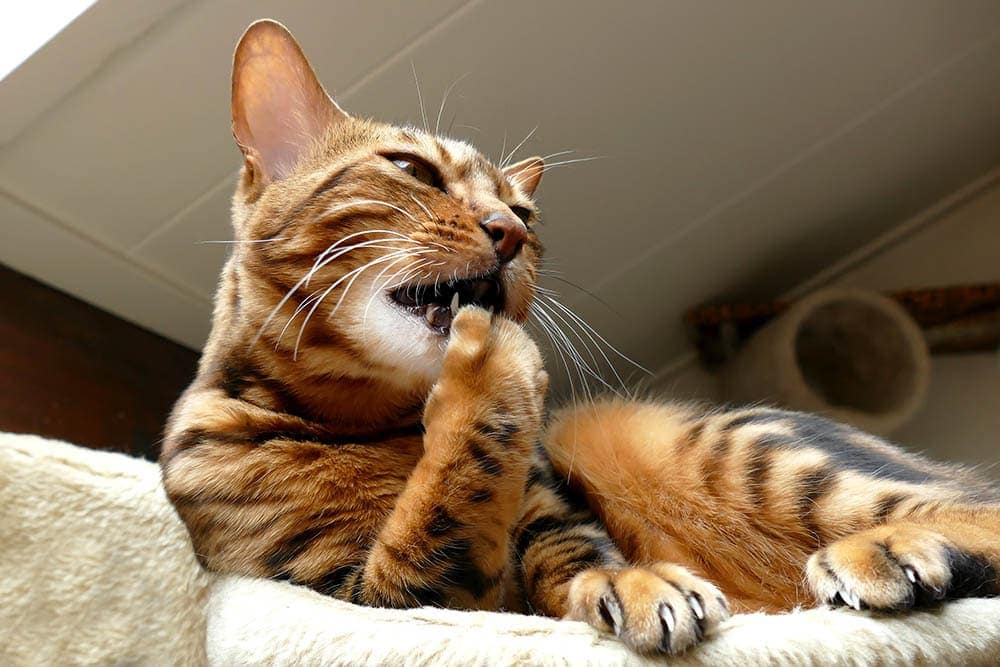
Most cats are neat freaks and spend a large portion of their day grooming themselves. If you have seen a cat settle in for a bath, you know that it is quite a process. This desire to stay clean extends to their nails. You will see them lick their feet thoroughly and then start chewing their claws. What does this mean? Usually, it is nothing to worry about.
Nail chewing and pulling are normal behaviors in cats with good grooming habits. Sometimes, this behavior can mean something else, though. Keep reading for more information on how to determine what nail-biting means for your cat.
Normal Grooming
Cats’ claws grow in layers from the inside out. The outer layers can sometimes crack, peel, and shed. To help things along, you will see your cat pulling on their nails with their teeth. They’re trying to remove the worn outer layers to reveal a sharp and shiny claw underneath. Cats groom their paws by spreading their toes and licking between them to remove any trapped dirt, litter, or other debris. They will also lick and chew their nails for the same reason.
Pulling and chewing nails are common cat grooming techniques and are not causes for concern. As part of your cat’s normal day, you’ll see this happen from time to time. If you notice it happening more often or at times outside of grooming, it could mean there’s an issue.
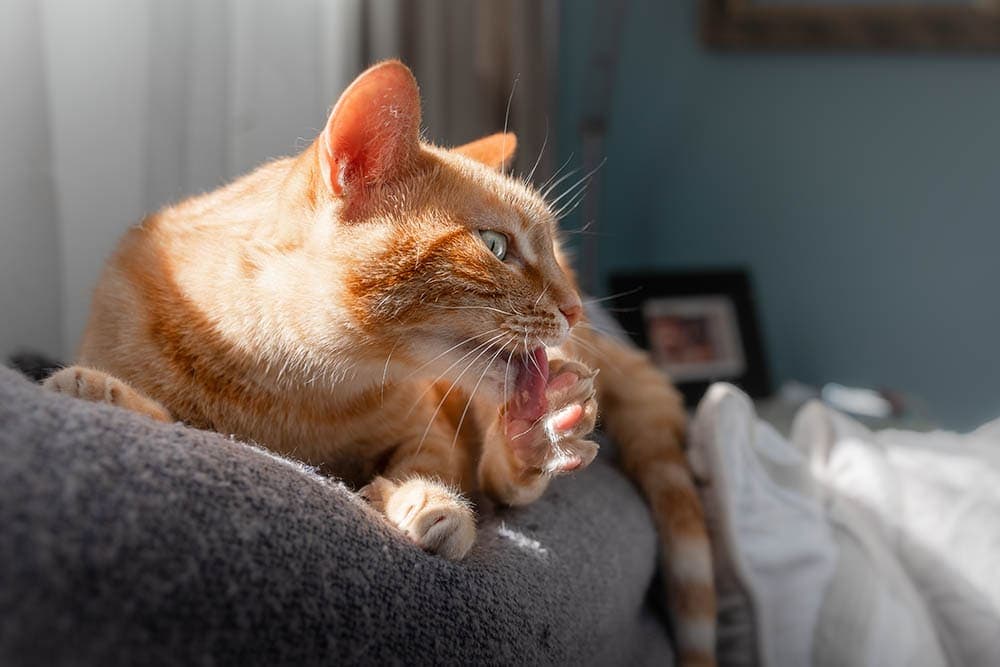
When to Be Concerned
If your cat is constantly pulling and chewing their nails, it could mean they are trying to tell you something. Examine your cat’s paws for any signs of health issues. Look for any redness, swelling, hair loss, or rough, cracked, bleeding skin.
Health Issues That Cause Excessive Nail Chewing
Your cat may be chewing their nails excessively due to certain health conditions. These include:
- Ringworm: A fungal infection of the skin, fur, and/or nails
- Pemphigus: An autoimmune skin disease that can also affect nail beds
- Bacterial or yeast infections: Causing redness, inflammation, and swollen skin around the nails
- Thick nails: Occurring mostly in older cats, can cause cats to chew on them more aggressively
Scratching
Cats chew and pull their nails to keep them clean and healthy, but they also love to scratch. Scratching can help them shed their outer nail coatings. Cats like to scratch surfaces that feel good on their claws. Scratching posts with different textures like rope and carpeting will give your cat a way to naturally keep their nails healthy.
Cats also mark their territories by scratching. Scent glands in their paws leave their mark behind every time they scratch. This is instinctual behavior to them. Wild cats mark their areas to make other cats aware of their territory.
Behavioral Issues
When cats excessively chew and pull their nails and it is not due to regular grooming or a health issue, the problem might be behavioral. Anxious, frustrated, and stressed cats overgroom themselves as a way to try to calm down. A move to a new house, a change in routine, or even something as simple as moving a cat’s food bowls can cause stress. Cats are creatures of habit, and some are more sensitive than others. If you notice overgrooming in your cat or abnormal nail chewing, try to determine the cause of this anxiety.
The issue could also stem from bored or lonely cats who want more to do. Engaging with your cat more often through affection and playtime can solve this problem. More toys, a new bed, or a new cat tree can reduce your cat’s boredom.
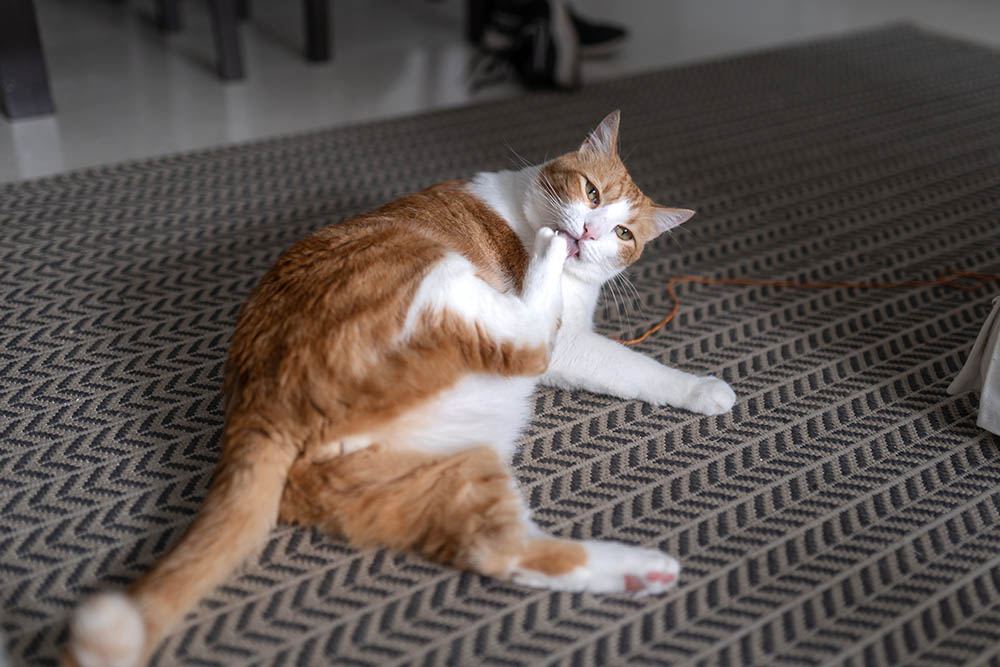
What You Can Do to Help
If your cat is engaging in normal grooming behaviors and you notice no signs of any health issues, there is no need to be concerned. If you do spot any signs of health problems, a trip to the veterinarian is necessary to diagnose and treat the issue. Adding scratching posts to your home will help give your cat a way to scratch and keep its claws healthy. Scratching may reduce their need to chew and pull their nails because the motion will shed the outer layers of the nails.
Keeping your cat’s claws trimmed will also help keep them healthy. Overgrown claws irritate and can injure your cat. They can grow so long that they make walking difficult or they grow painfully into the paw pads. If your cat can’t fully retract their nails, the sharp tips can get stuck in fabric or carpeting, leading to even more injuries. Trimming your cat’s nails every 10–14 days will prevent them from overgrowing.
Overgrown nails can cause all kinds of problems for your cat's paws. Our Hepper Cat Nail Clipper Set includes everything you need to keep your cat's nails safely trimmed. It includes two sizes of stainless steel clippers complete with ergonomic handles and built-in safety guards. This set is perfect for all ages, sizes, and breeds of cats!
Final Thoughts
Cats chewing and pulling their nails are normal grooming behavior and not a cause for concern. If you happen to notice this happening excessively or in addition to red, swollen, or irritated paws, your cat should be examined by a veterinarian to treat any health problems that may be occurring. By keeping your cat’s nails trimmed and giving them access to various scratching posts, you can help them keep their nails healthy and clean.
Featured Image Credit: Ilona Koeleman, Shutterstock




